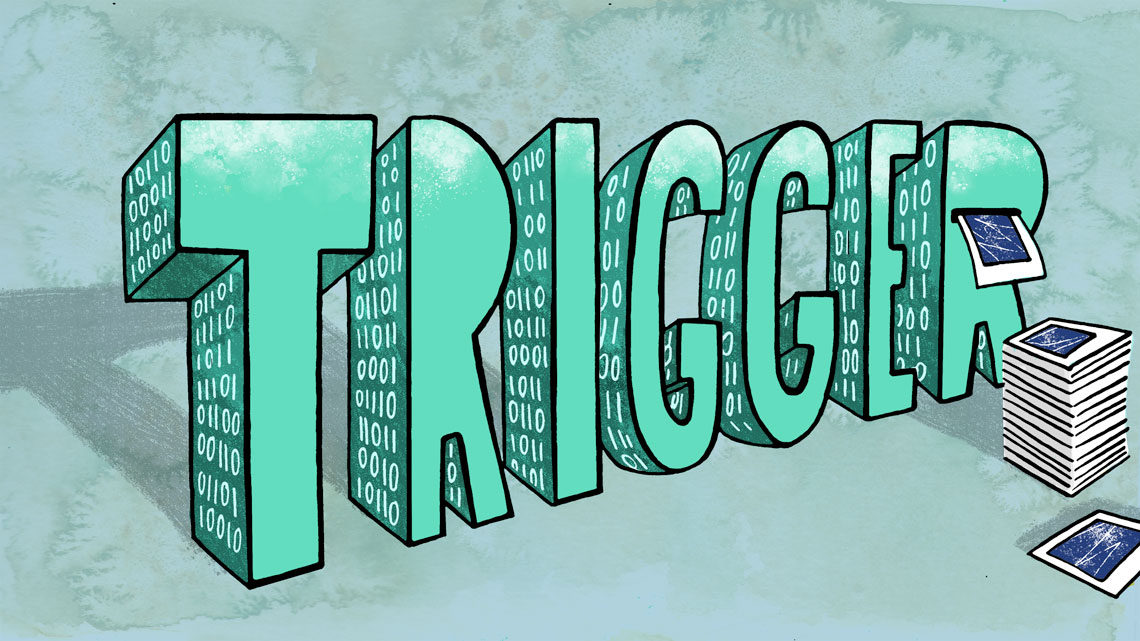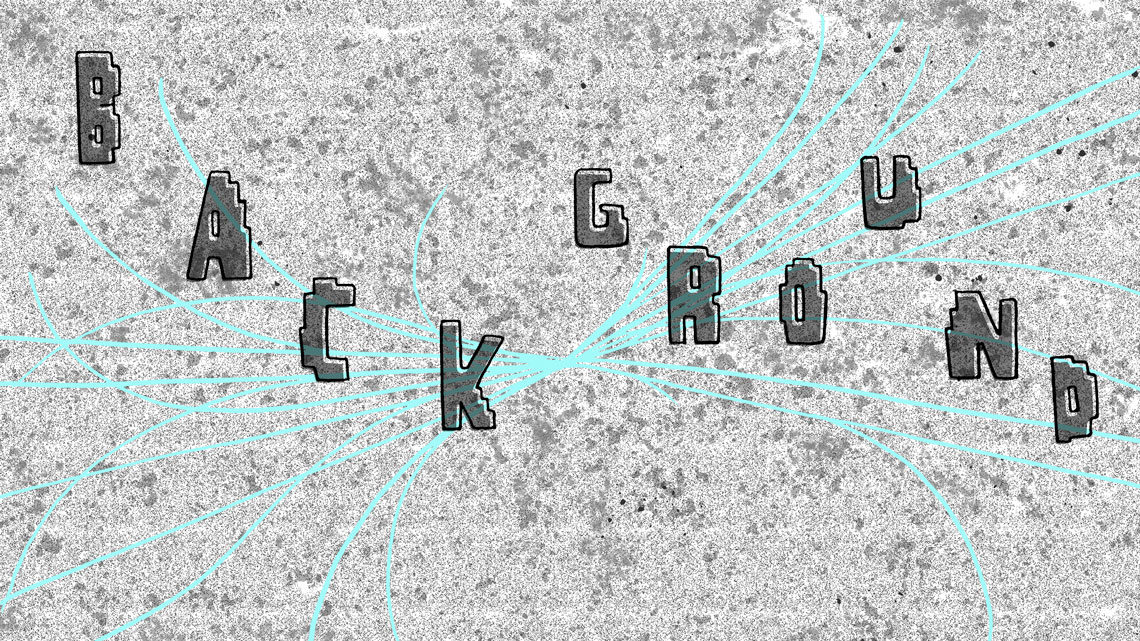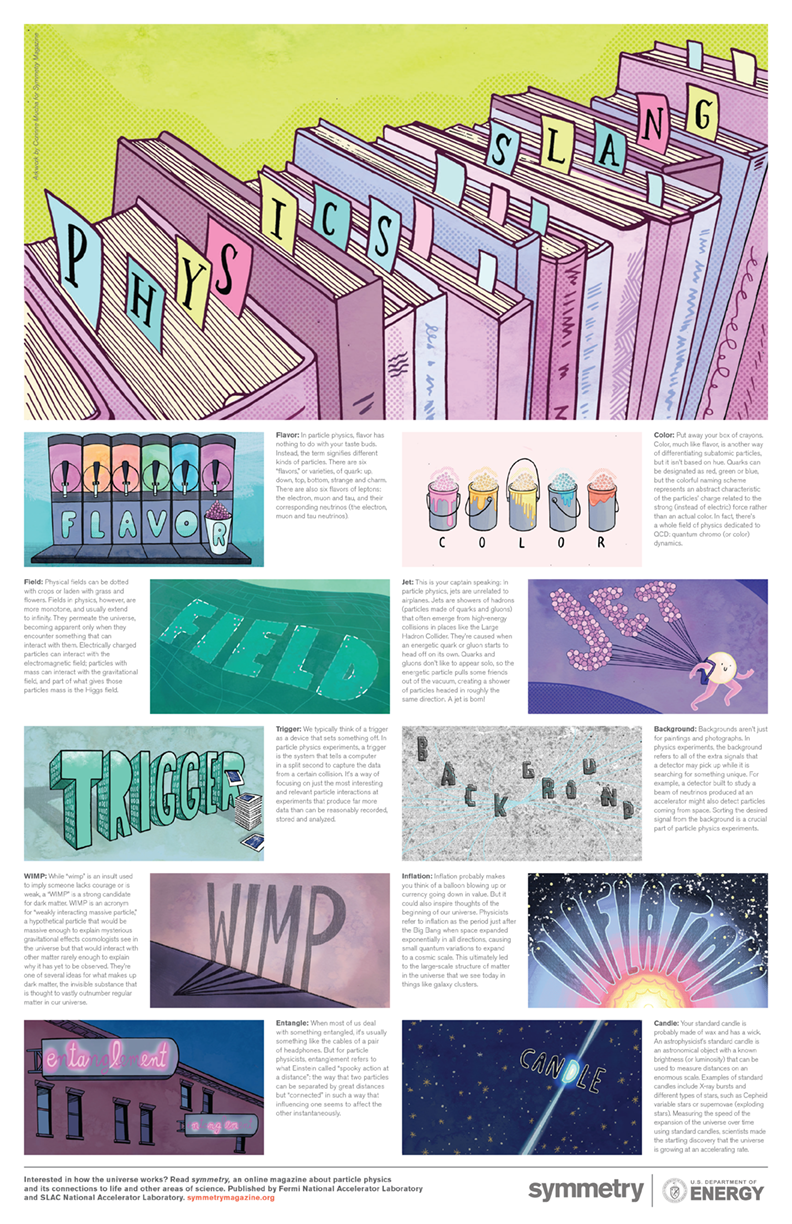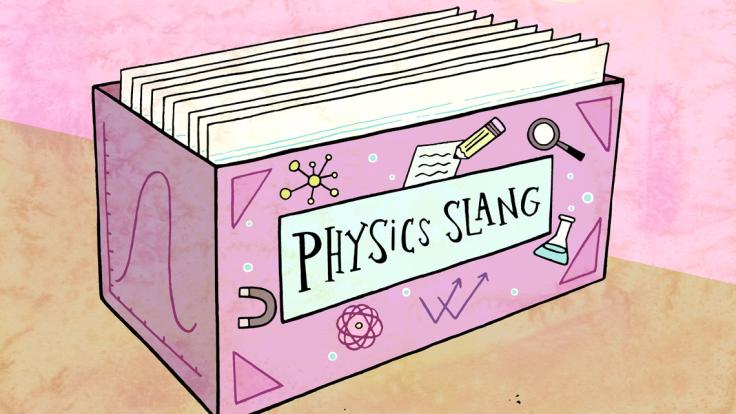Given the popularity of our first article about physics concepts with deceptively common names, Symmetry is back with 10 more seemingly normal words that mean something different in a science context. Get ready to talk science:

Flavor
In particle physics, flavor has nothing to do with your taste buds. Instead, the term signifies different kinds of particles. There are six “flavors,” or varieties, of quark: up, down, top, bottom, strange and charm. There are also six flavors of leptons: the electron, muon and tau, and their corresponding neutrinos (the electron, muon and tau neutrinos).

Color
Put away your box of crayons. Color, much like flavor, is another way of differentiating subatomic particles, but it isn’t based on hue. Quarks can be designated as red, green or blue, but the colorful naming scheme represents an abstract characteristic of the particles’ charge related to the strong (instead of electric) force rather than an actual color. In fact, there’s a whole field of physics dedicated to QCD: quantum chromo (or color) dynamics.

Field
Physical fields can be dotted with crops or laden with grass and flowers. Fields in physics, however, are more monotone, and usually extend to infinity. They permeate the universe, becoming apparent only when they encounter something that can interact with them. Electrically charged particles can interact with the electromagnetic field; particles with mass can interact with the gravitational field, and part of what gives those particles mass is the Higgs field.

Jet
This is your captain speaking: In particle physics, jets are unrelated to airplanes. Jets are showers of hadrons (particles made of quarks and gluons) that often emerge from high-energy collisions in places like the Large Hadron Collider. They’re caused when an energetic quark or gluon starts to head off on its own. Quarks and gluons don’t like to appear solo, so the energetic particle pulls some friends out of the vacuum, creating a shower of particles headed in roughly the same direction. A jet is born!

Trigger
We typically think of a trigger as a device that sets something off. In particle physics experiments, a trigger is the system that tells a computer in a split second to capture the data from a certain collision. It’s a way of focusing on just the most interesting and relevant particle interactions at experiments that produce far more data than can be reasonably recorded, stored and analyzed.

Background
Backgrounds aren’t just for paintings and photographs. In physics experiments, the background refers to all of the extra signals that a detector may pick up while it is searching for something unique. For example, a detector built to study a beam of neutrinos produced at an accelerator might also detect particles coming from space. Sorting the desired signal from the background is a crucial part of particle physics experiments.

WIMP
While “wimp” is an insult used to imply someone lacks courage or is weak, a “WIMP” is a strong candidate for dark matter. WIMP is an acronym for “weakly interacting massive particle,” a hypothetical particle that would be massive enough to explain mysterious gravitational effects cosmologists see in the universe but that would interact with other matter rarely enough to explain why it has yet to be observed. They’re one of several ideas for what makes up dark matter, the invisible substance that is thought to vastly outnumber regular matter in our universe.

Inflation
Inflation probably makes you think of a balloon blowing up or currency going down in value. But it could also inspire thoughts of the beginning of our universe. Physicists refer to inflation as the period just after the Big Bang when space expanded exponentially in all directions, causing small quantum variations to expand to a cosmic scale. This ultimately led to the large-scale structure of matter in the universe that we see today in things like galaxy clusters.

Entangle
When most of us deal with something entangled, it’s usually something like the cables of a pair of headphones. But for particle physicists, entanglement refers to what Einstein called “spooky action at a distance”: the way that two particles can be separated by great distances but “connected” in such a way that influencing one seems to affect the other instantaneously.

Candle
Your standard candle is probably made of wax and has a wick. An astrophysicist’s standard candle is an astronomical object with a known brightness (or luminosity) that can be used to measure distances on an enormous scale. Examples of standard candles include X-ray bursts and different types of stars, such as Cepheid variable stars or supernovae (exploding stars). Measuring the speed of the expansion of the universe over time using standard candles, scientists made the startling discovery that the universe is growing at an accelerating rate.














